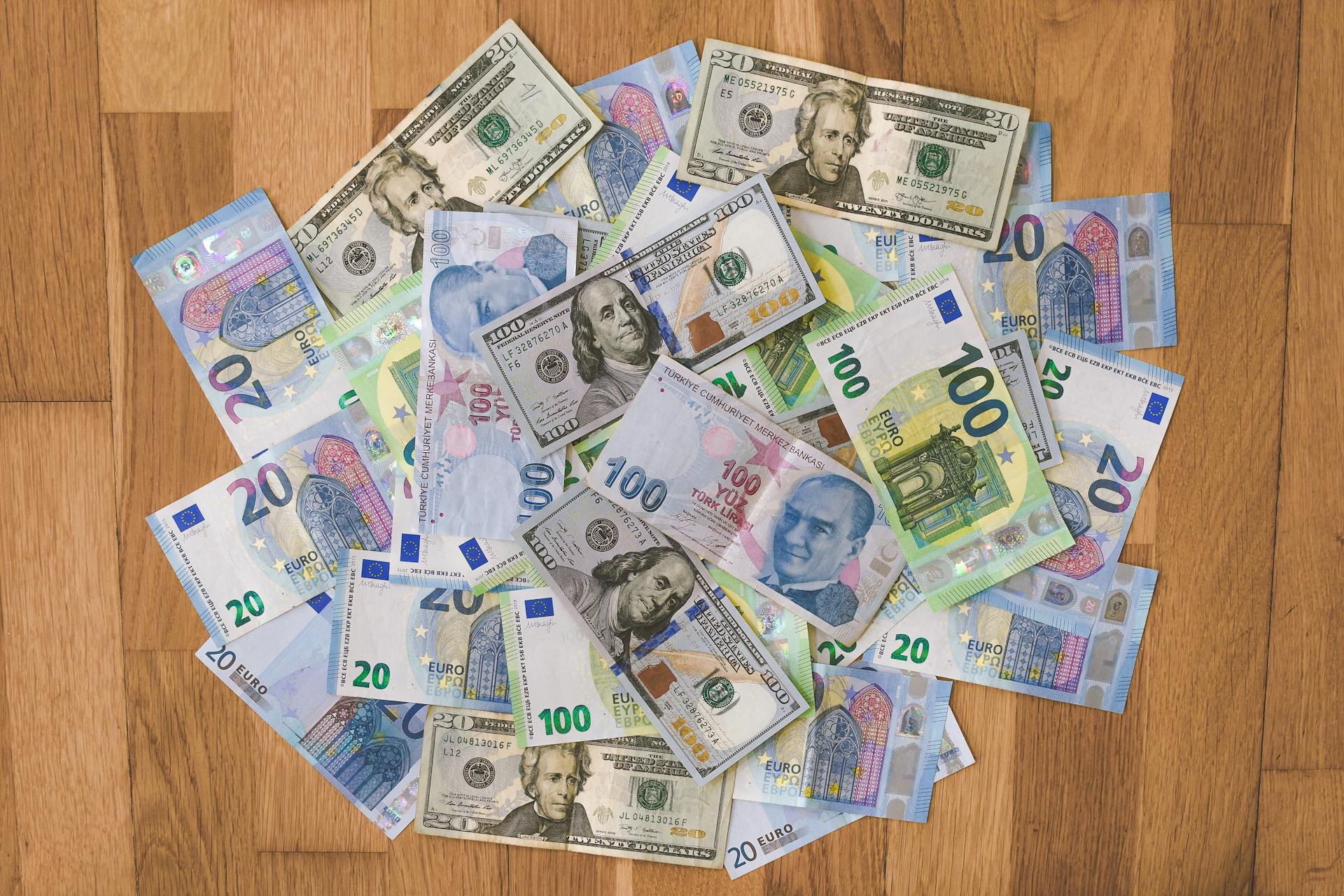
Bad debt expense can be a significant financial burden for businesses, especially those in industries with high customer turnover rates.
The cash flow statement is a crucial tool for businesses to manage their bad debt expense effectively.
A bad debt expense is an allowance for expected losses on accounts receivable that are unlikely to be collected.
To accurately reflect bad debt expense on the cash flow statement, businesses must identify and record bad debt expense as a reduction in accounts receivable.
Bad debt expense is typically recorded as a direct expense on the income statement, but it also affects the cash flow statement through the reduction in accounts receivable.
By accurately tracking and recording bad debt expense, businesses can ensure their cash flow statement accurately reflects their financial situation.
This can help businesses make informed decisions about their financial management and cash flow.
In the next section, we'll explore how bad debt expense affects the cash flow statement in more detail.
Take a look at this: Difference between Accrued Expenses and Accounts Payable
What is?
Bad debt expense is a record of unpaid receivables. It's a debit entry paired with a credit to the AR entry, allowing companies to report their income accurately.
A bad debt expense occurs when a customer doesn't pay their invoice for any reason. This can lead to inaccurate income figures if not handled properly.
The direct write-off method is used to record insignificant debts, where a business debits bad debt expense and credits accounts receivable immediately when an invoice is deemed uncollectible. This can be misleading, as revenue is recorded in one period but expensed in another.
Under the allowance method, a business estimates which receivables they think will be uncollectable, usually at the end of the year. This ensures costs are expensed in the same period as the recorded revenue.
Suggestion: Cash Flow Statement for Small Business
Calculating Bad Debt Expense
Calculating bad debt expense is a crucial aspect of managing cash flow. You can use two main methods: the Percentage of Sales Method and the Accounts Receivable Aging Method.
The Percentage of Sales Method estimates bad debt expense as a flat percentage of net credit sales for the period, based on historical experience. For example, if net credit sales for the period are $500,000 and the estimated percentage of uncollectible accounts based on past experience is 2%, then the bad debt expense would be $10,000.
The Accounts Receivable Aging Method involves analyzing the age of outstanding invoices to determine which ones are likely to be uncollectible. This method can be useful if you have a large number of customers with varying payment terms.
To give you a better idea of how these methods work, here's a comparison of the two:
Both methods have their advantages and disadvantages, and the choice of method will depend on the specific needs of your business.
How Arises
Bad debt arises from unpaid invoices, which are generated when your company provides a service and bills the customer. This creates an account receivable, which gets counted as revenue in accrual accounting.
Most companies rely on credit sales, but if you have a significant amount of cash sales, it's better to look at the percentage of total accounts receivable collected. This method gives you a higher margin of safety, but it might be too conservative and decrease your AR to unrealistic levels.
You can use historical collection data to estimate the allowance for doubtful accounts. This method works best if you have a relatively small customer base and straightforward billing cycles.
Here's an example of how to determine the current period's AFDA using the historical percentage method:
- Total AR or credit sales: $15,000,000
- Historical default rate: 5%
If you have a small customer base, the historical percentage method will help you calculate a realistic allowance for doubtful accounts.
How to Calculate
Calculating bad debt expense can be a complex task, but it's essential for businesses to accurately estimate and record these expenses. You can use two main methods: Percentage of Sales Method and Accounts Receivable Aging Method.
The Percentage of Sales Method is a straightforward approach that estimates bad debt expense as a flat percentage of net credit sales for the period, based on historical experience. For example, if net credit sales for the period are $500,000 and the estimated percentage of uncollectible accounts based on past experience is 2%, then the bad debt expense would be $10,000.
The Direct Write-Off Method is another approach, but it's not the preferred method for financial reporting purposes. It involves writing off the full amount of any specific accounts receivable that are identified as uncollectible. This method is simple, but it can misstate expenses and revenues across periods.
There are also two ways to estimate bad debt expense using the Percentage of Sales Method: Historical percent of credit sales or total AR, and Percentage of sales. The Historical percent of credit sales or total AR method uses historical collections data to estimate the allowance for doubtful accounts. For example, if your company has a historical default rate of 5% and total AR or credit sales of $15,000,000, the current period's AFDA would be calculated using this method.
Here's a comparison of the two methods:
The key is to choose the method that best suits your business needs and to regularly review and update your estimates to ensure accuracy.
Debit or Credit?
Allowance for doubtful accounts is a credit on financial statements and a contra-asset on balance sheets.
It helps companies predict and prepare for bad debts by lowering accounts receivable on the balance sheet.
Companies use allowance for doubtful accounts to forecast uncollectible amounts.
This approach helps uphold accurate financial records.
Expand your knowledge: Accounts Receivable Cash Flow Statement
Frequently Asked Questions
How to show bad debts in cash flow statement?
Bad debts are not shown on the cash flow statement, as it's an expense accounted for on the income statement. Instead, accounts receivable reflects the amount customers owe the business.
Is bad debt expense an operating expense?
Yes, bad debt expense is an operating expense, specifically a selling, general and administrative cost that reduces a company's net income. It's reported on the income statement in the same period as the sale that led to the bad debt.
Sources
- https://accountingsuperpowers.com/financial-statements/cash-flow-statement/cash-flow-statement-direct-method/
- https://smallbusiness.chron.com/report-bad-debt-cash-flow-statements-65331.html
- https://lindakeithcpa.com/should-i-disregard-back-bad-debts-in-cashflow-analysis-of-tax-returns/
- https://www.versapay.com/resources/allowance-for-doubtful-accounts
- https://suozziforny.com/how-to-calculate-bad-debt-expense/
Featured Images: pexels.com


